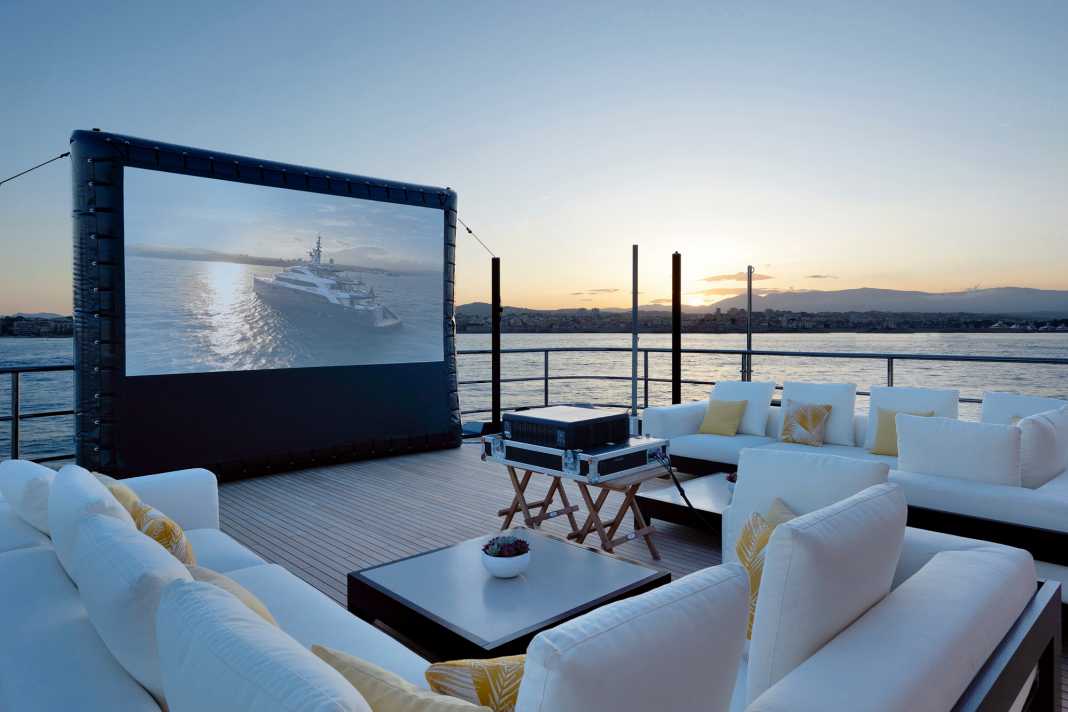





Place 10: Zazou
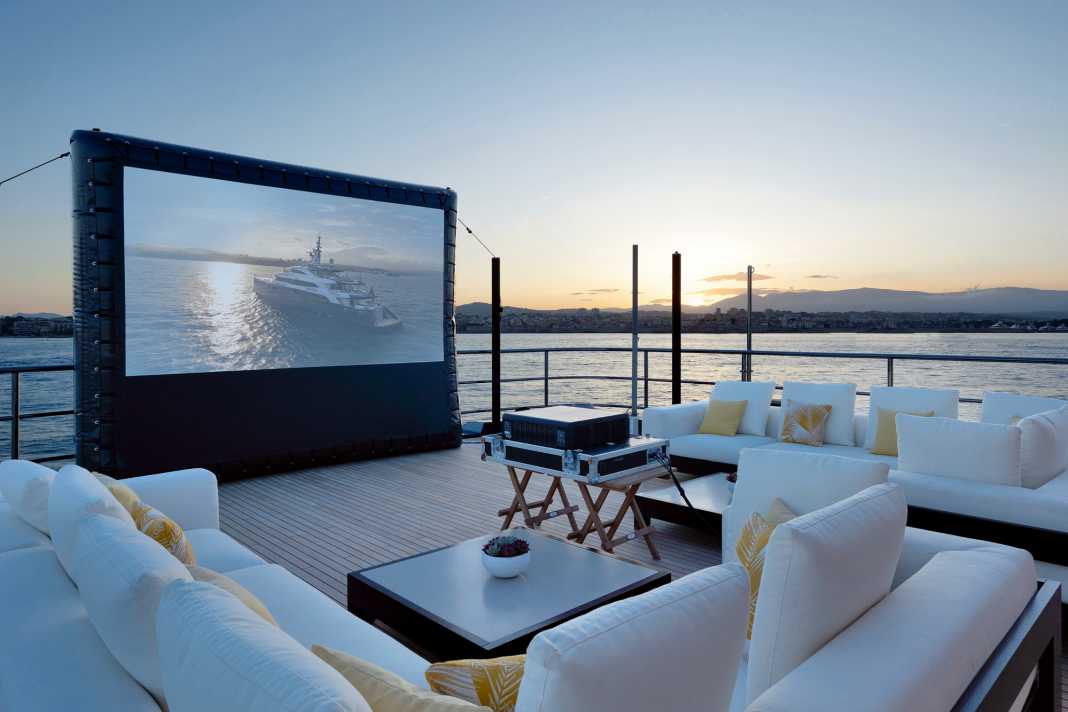


The 65 metre "Zazou" shows that it is also possible to be flexible and cost-sensitive. The use of an air compressor conjures up an impressive screen aft on the bridge deck, the rear section of which is stretched over the existing carbon bimini poles. The projector stands on a teak folding table and the outdoor furniture can be arranged flexibly. As it may seem, the owner of the stylish Benetti indirectly admits to being a cineaste. For the saloon on the main deck, he also instructed the designers at Sinot that this space could also be converted into a fully-fledged film theatre. The indoor cinema can be reached by lift if it gets too chilly on deck in the evening and the ETO (electro-technical officer) seamlessly continues the film screening two decks below. There, the proximity to the galley is no longer too great. The beautifully classic navy blue colour of the hull and the French-sounding name would be a perfect match for works by the Nouvelle Vague.
9th place: Capricorn
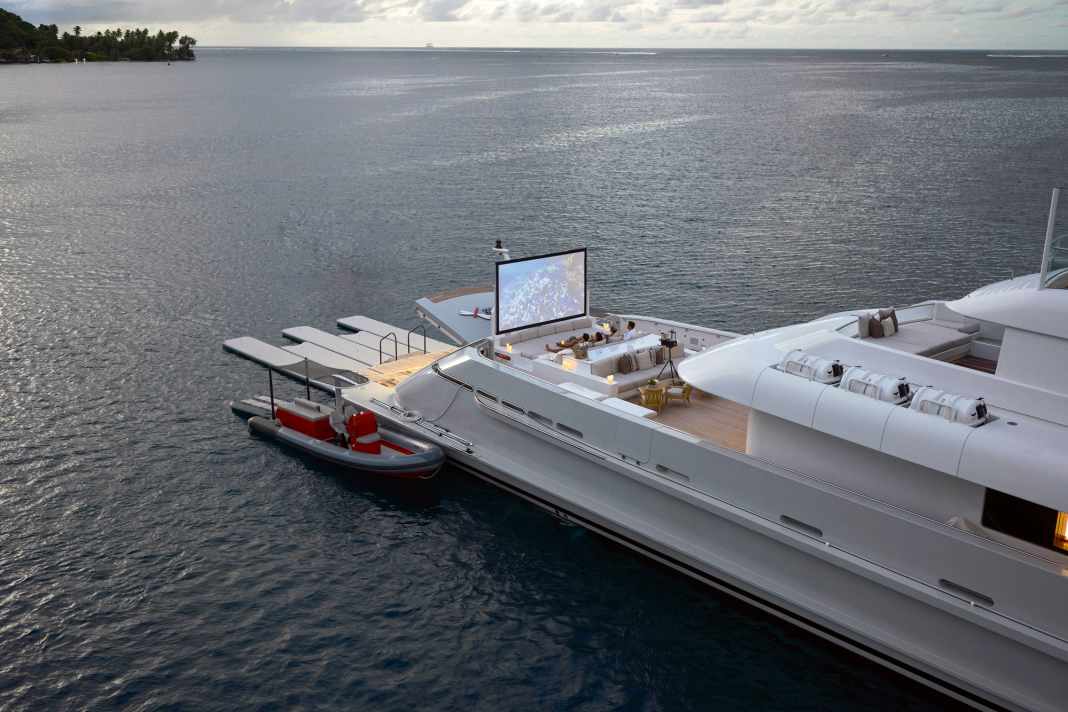


The fact that "Capricorn" belonged to Sergey Brin for many years is evidenced by the worldwide aid missions that the Google co-founder travelled on the old "Dragonfly" after natural disasters. In 2015, Brin founded the aid organisation Global Support and Development (GSD), whose rapid response team of ships included the 73.30-metre-long and up to 27-knot Espen-Øino-Riss. Born in Moscow in 1973, Brin, like his Google partner Larry Page, became a yachtie in 2011 when he acquired the aluminium format from the West Australian shipyard SilverYachts. It is therefore likely that the tech entrepreneur provided a screen above the water sports centre that slides up from the backrest of the sunbathing area. In contrast, the projector on the tripod behind it looks far more pragmatic. Capricorn" is currently listed for 27 million euros, so the new owner can upgrade. Sergey Brin now manages a 142-metre Lürssen, again named "Dragonfly", and can enjoy a "business deck" with a large office, gym, games room and heli-hangar. The film theatre is located a few floors below.
8th place: Sea Eagle
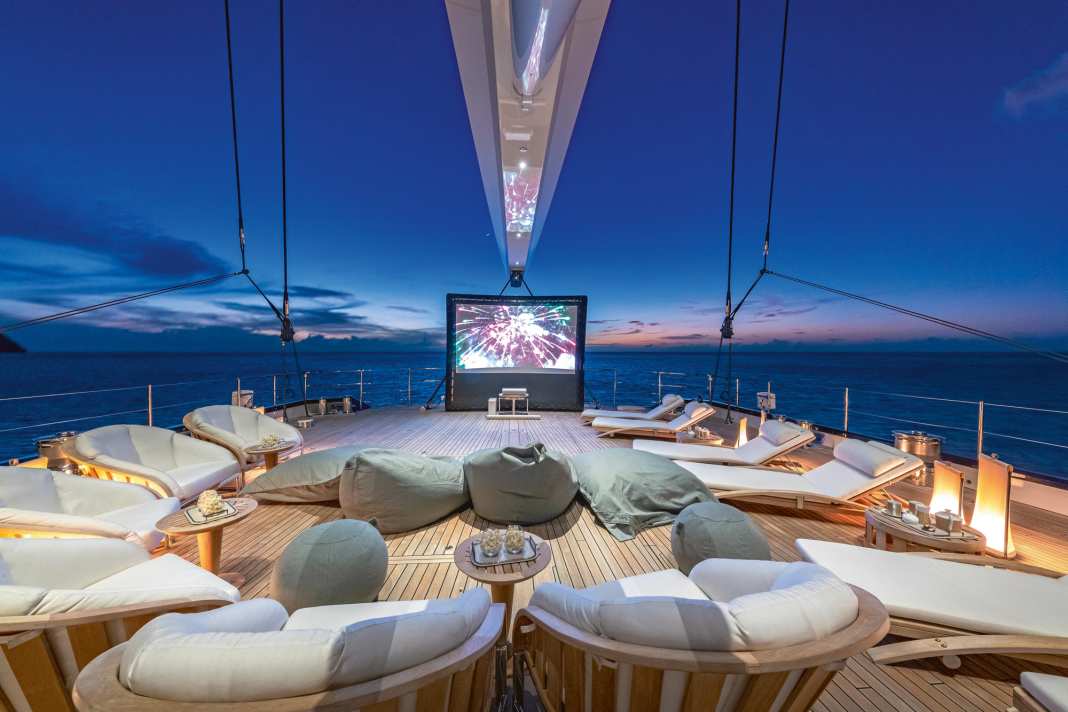


"Sea Eagle II" now sails around the world without the numerical addition, but a screen is still stretched under the mizzen boom. Although the aluminium schooner measures 80 metres in length, it is difficult to accommodate a cinema room, as is the case on many supersailers. The narrow hull and flat superstructure are designed for sailing efficiency rather than a voluminous interior. "Sea Eagle" therefore relies on the logistically challenging option of a pop-up film theatre in the open air. With the increase in charter customers coming from motor yachts and often longing for cinematic entertainment, cinemas under sail could soon no longer be a rarity. Vitters is currently building a 68-metre ketch, on whose lower deck a large guest suite has had to make way for a cosy cinema.
7th place: Limerence
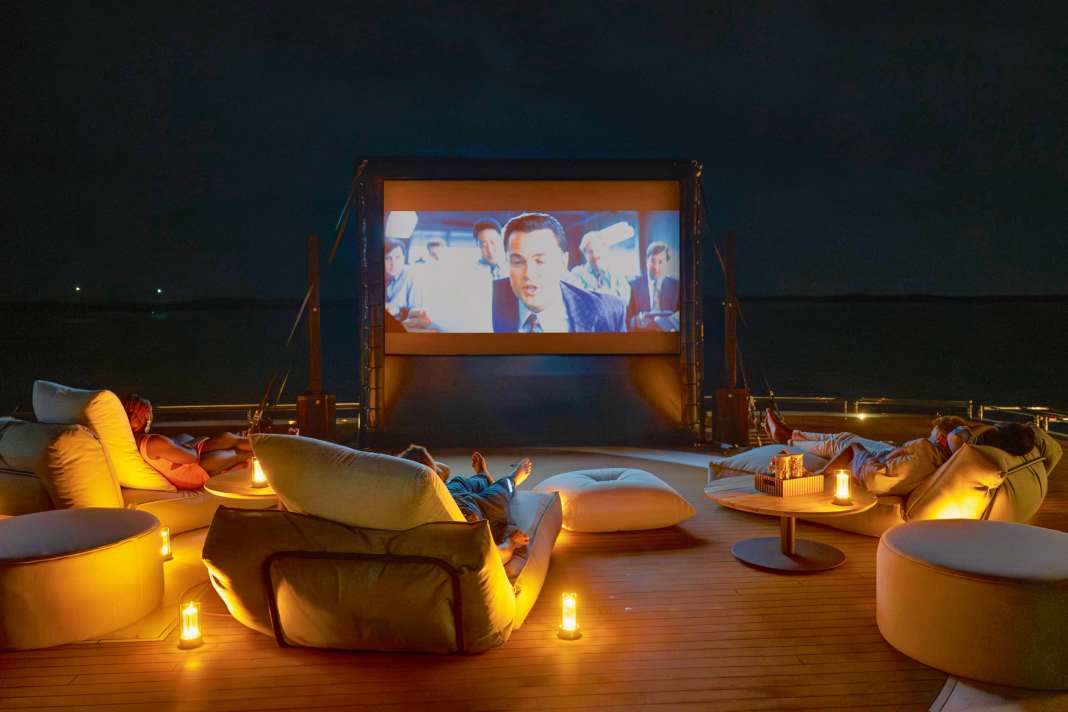


On "Limerence", an outdoor cinema that comes into its own in the dark makes perfect sense. Because then the 53 metre long all-rounder has no more outdoor activities to offer. More sport on a yacht is not possible. After an exhausting and fulfilling "Limerence" day, many a charter guest is likely to be longing for relaxation and want one thing above all else: The helideck is so spacious that you could even organise a tender cinema instead of a car cinema. The fleet would be big enough, but it is located one deck below. From there or further down, the crew brings out a variety of lounge furniture and the inflatable structure on which the screen hangs. With any luck, the slide from "Limerence's" gigantic aqua park will remain outboard, on which the passengers will be whisked into the water after the screening of "The Wolf of Wall Street" and thus into the immediate vicinity of the cabins.
Place 6: H3
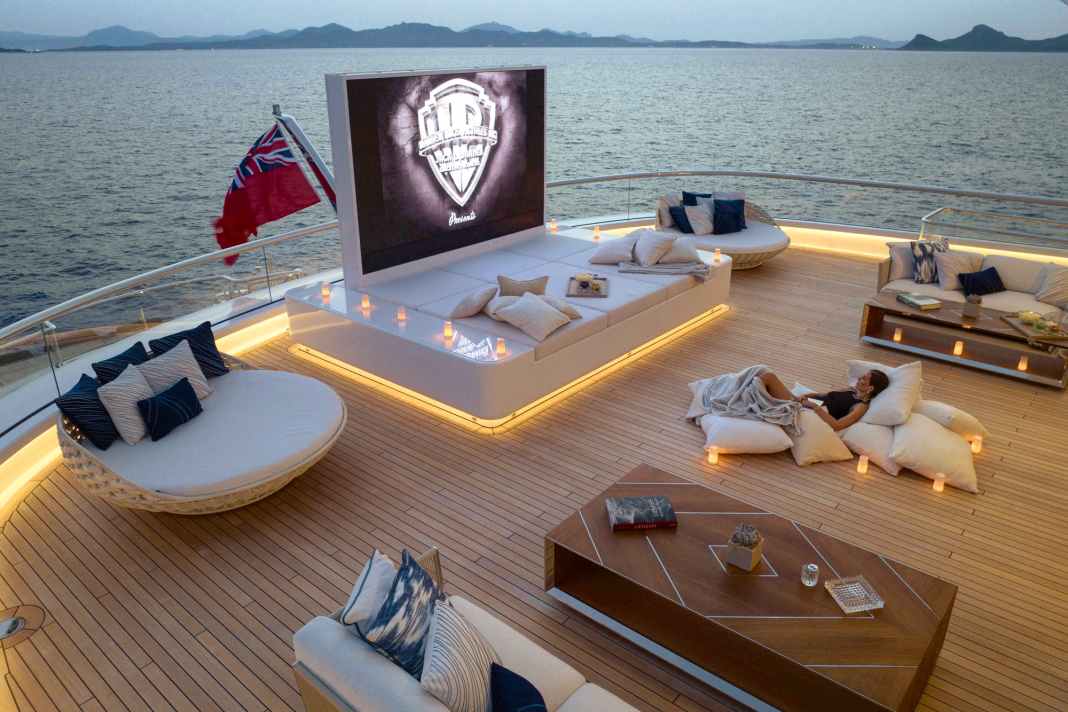


The Dutch shipyard turned the 95 metre long "Trick One", which was launched by Oceanco in 2000, into the 105 metre long "H3". By the time it was reborn in 2023, superstructures had been welded on, extended and a new interior designed by Reymond Langton had been realised. Oceanco managed the conversion and incorporated the latest technologies. The modular outdoor cinema was developed by Seable & Co. At first glance, CineSea looks like a simple sunbathing area with mobile backrests. However, the piece of furniture can be transformed fully automatically into a display, a golf tee and a yoga or dance floor. On "H3", the 75-inch screen rotates hydraulically by 30 degrees in both directions and, thanks to a brightness of 3,000 nits, allows for sustained film enjoyment.
Place 5: Ahpo




There are rooms that you only have to look at to realise what they sound like. In the case of the "Ahpo" screening room, one term in particular comes to mind: "soundproof". You could hear a pin drop if it weren't for the long-pile carpet. In principle, the only thing missing are the heavy molleton curtains in the ensemble of starry sky and sound-absorbing walls with carefully concealed subwoofers. Their basses press the audience into the soft cushions of twelve cinema seats, which radiate comfort from every pore and on which - were it not for the popcorn between the backrests, which, depending on the creepiness factor, is lost in large quantities - you would prefer to dive seamlessly into the world of sleep next to Sammy Davis Jr. and Liz Taylor. It is unclear whether charter guests will still be able to enjoy the cinema located on the lower deck. The second "Ahpo" owner is said to have sold the 115-metre Lürssen.
4th place: Jimmy
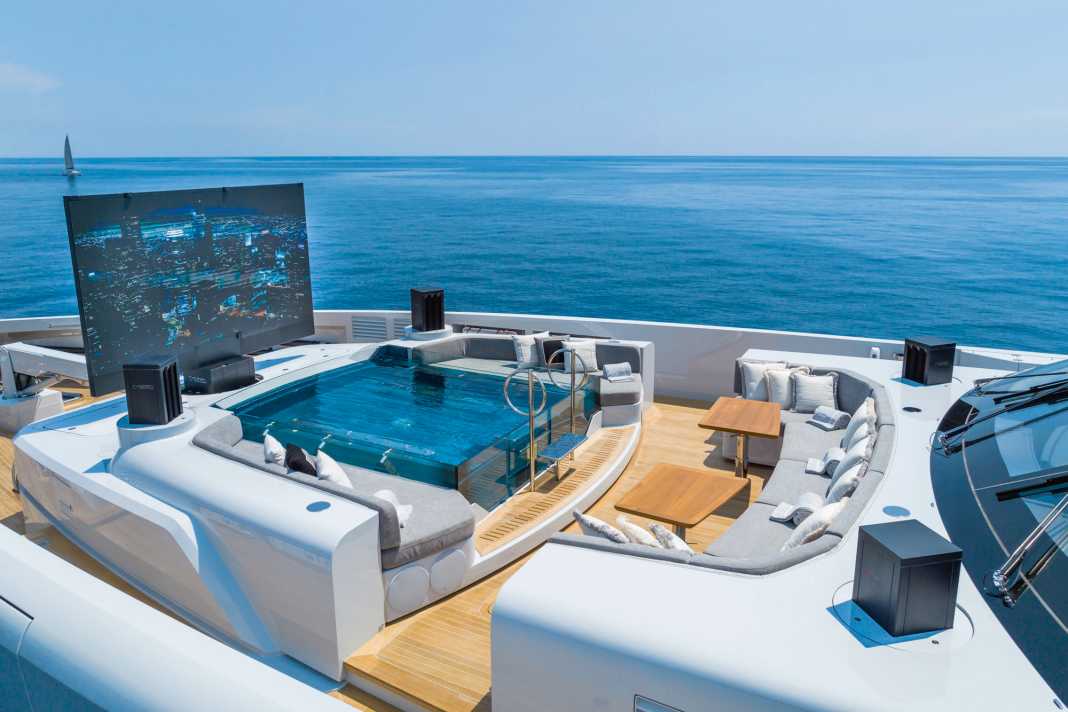



On "Jimmy", delivered in 2023 as "Grey" by Tankoa, a Transformer TV from C-Seed is moving out of the deck. The idea came from two ex-managers of Bang & Olufsen, who founded the company in Vienna in 2009. A marinised version on "Jimmy" emerges cylindrically from a depth of 60 centimetres, unfolds to a screen diagonal of 3.66 metres, swivels up to 180 degrees and costs around 300,000 euros. The speakers from Focal Naim also rest in small hangars when not in use. The placement on the coupé-like long foredeck of the 50-metre model is unusual, as is the alignment of the pool. Thanks to MicroLED technology, the combination opens up unexpected immersive effects, even in bright daylight conditions, if water is used in the film. Although the pool is only half a metre deep, it remains to be seen whether "Jaws" is the right blockbuster choice. The experience may be too impressive and the subsequent jump from the bathing platform into the sea may be difficult or even impossible.
3rd place: Lady S
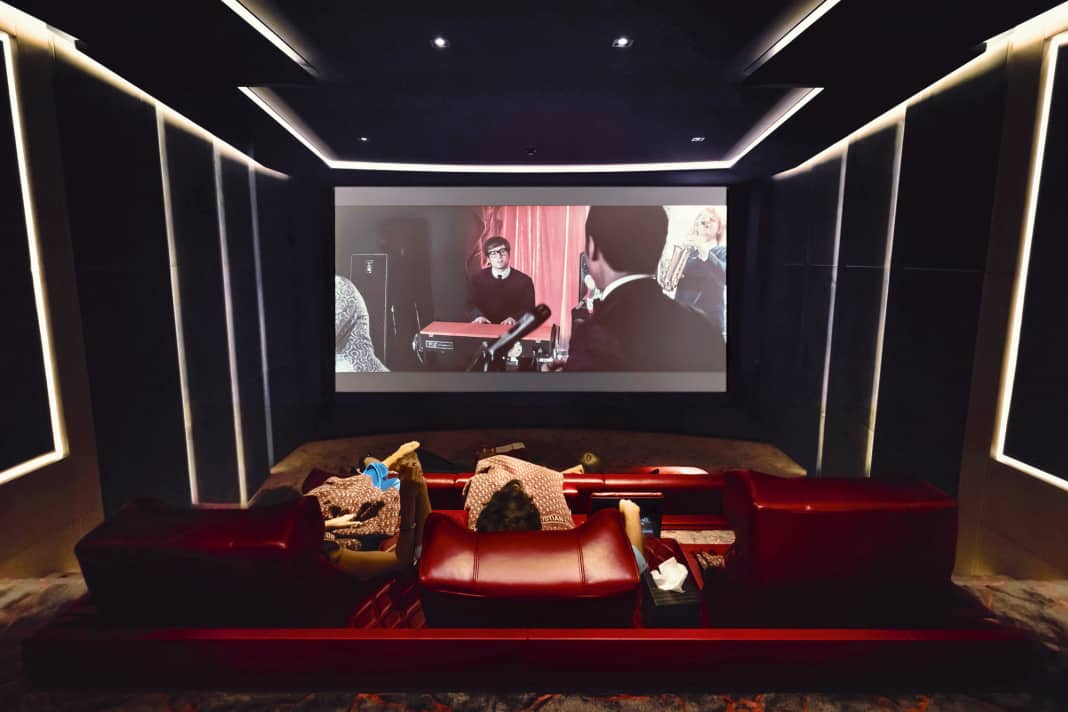



Launched in 2019, the 93-metre Feadship was the first yacht with an IMAX cinema. In the midship room (8 x 13 m), 13 guests are spread over three levels in front of a curved six by three metre screen that displays 4K images from two digital projectors, also in 3D with the corresponding DCP (Digital Cinema Package). Matching Dolby Atmos sound is generated by 17 loudspeakers and seven subwoofers. As a result, the system integrator had to get two competitors to exchange technical specifications, albeit indirectly. Popcorn and drinks are served in the lobby before entering the cinema. To prevent cinema-goers from having to go upstairs, there is a day toilet - the flushing of which, it was very important to the owner, should not be heard under any circumstances. The owner's penchant for cinematics is expressed by 8K televisions in the cabins and a C-seed TV on the main deck aft. The LED wall extends to a height of 4.65 metres in just ten seconds, unfolding to its full size of 3.65 by 5.10 metres after 25 seconds.
2nd place: Maltese Falcon
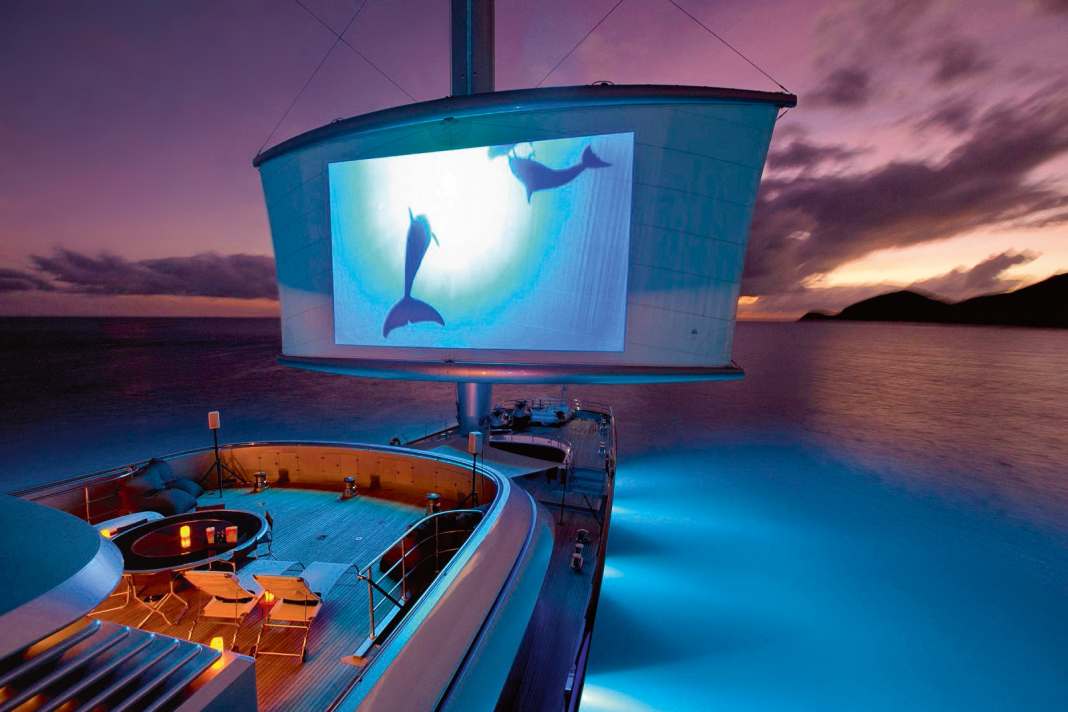


Tom Perkins was a pioneer in many respects. With the 88-metre-long "Maltese Falcon", the US entrepreneur, who died in 2016, ushered in the renaissance of the dyna-rig. The German naval architect Wilhelm Prölß first introduced the wheel-based sail system in the 1960s as a "dynamic rig". With the FalconRig, 15 sails unfurled from the centre of the mast to the ends of the curved yards at the touch of a button for the first time in 2006, without the need to loosen gordings or stays. The fact that the cloth can be set up fully automatically within a few minutes on the unstayed, 58 metre high carbon masts also benefits spontaneous cinema enjoyment. All that remains is to place the projector on the flybridge, set up loungers and speakers one deck below, and start the film on the 20 square metre screen. But that's not all: refits over the last three years have brought a new cinema room to the main deck. Burgess can arrange seven film evenings under sail from 490,000 euros.
1st place: Kismet
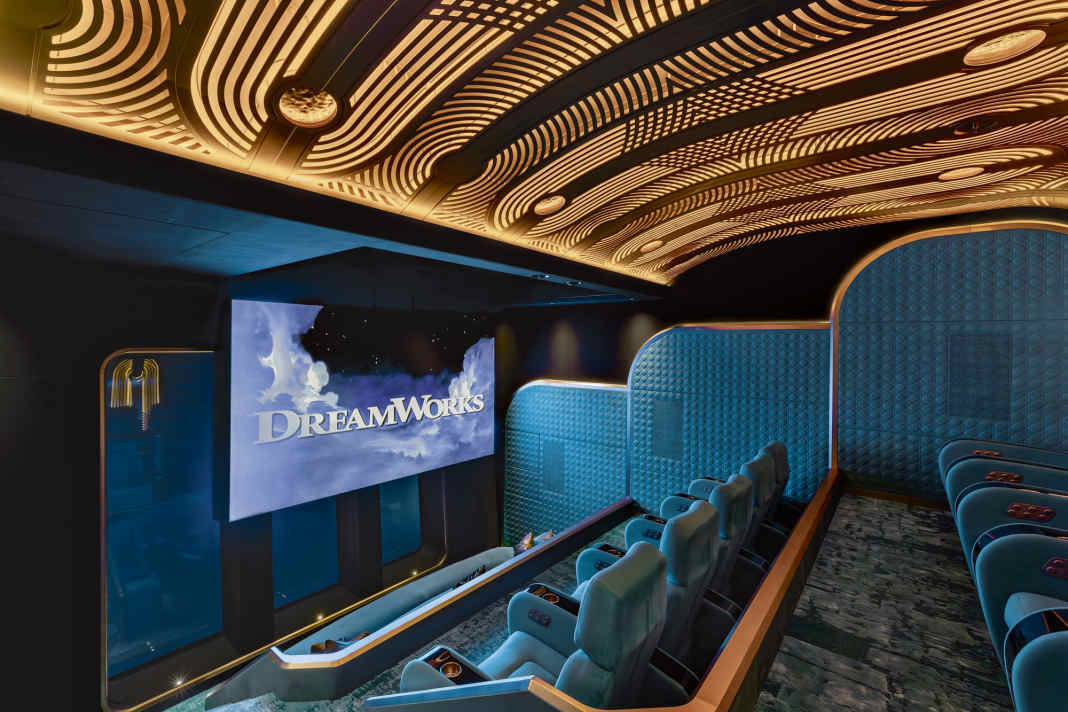



Just a dark cinema room in the belly of the ship was not enough for "Kismet" owner Shahid Khan this time. For his third Lürssen, which was delivered in 2024 and is 122 metres long, he chose a dual use with the motto "films and the sea". Two adult children, each with offspring, are likely to have been the driving force. In addition to Reymond Langton, Khan's daughter was also involved in the styling in the style of an art deco film palace. However, the charter market, which "Kismet" sails from three million euros per week, is always thirsting for new on-board specialities. The Nemo Lounge with three tiers is spectacular in its own right. Three 1.1 x 2.8 metre panes of up to 15 centimetre thick laminated safety glass from Seele Sedak, which classification societies consider to be stronger than steel, provide a turtle's-eye view. Whether "Titanic" should necessarily be watched in this environment is questionable. It would also be interesting to find out at which fish or marine mammal sighting the film enjoyment is interrupted and the 160-inch screen is folded up.

